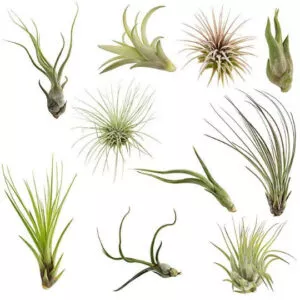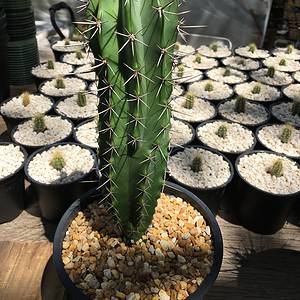No products in the cart.
Table of Contents
Did Hoya Macgillivrayi catch your attention? Hoya macgillivrayi is one of the most beautiful plants in Australia’s flora.
The dark burgundy blossoms, succulent evergreen foliage, and wonderful aroma of this Hoya plant make it difficult to remain indifferent. Read more below to find out how to care for such beauty!
The table below is the basic information about the (houseplant name). This information introduces the brief plant (houseplant name) care.
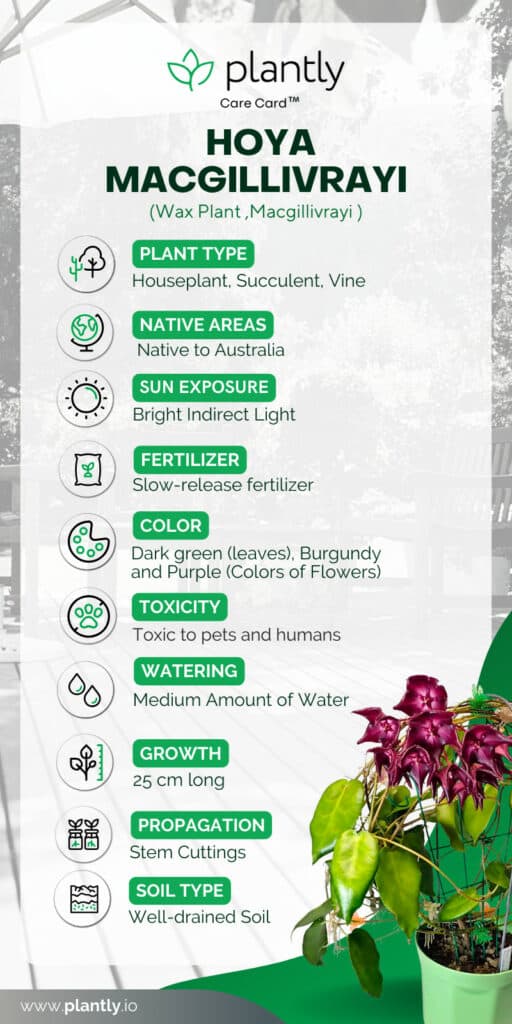
Hoya Macgillivrayi Plant Care Basics

The Hoya macgillivrayi should be given appropriate care. The gardeners should be fully aware of how to take care of the plant. Complete knowledge of the Hoya macgillivrayi care guides the gardeners in providing the plant is in excellent growing condition.
This would allow the plant to grow healthy while manifesting its full beauty. Giving the right Hoya macgillivrayi care will be helpful for the plant’s growth, even if it was planted indoors. The following are the care tips on how to take care of the Hoya macgillivrayi properly.
Soil Mix
The soil requirement of the macgillivrayi hoya is a well-draining and well-aerated soil type. The soil required by the plant is not poor-draining soil or soil that has no drainage holes. The soil should be on a pH level of slightly acidic to neutral.
The soil can be mixed with organic materials such as peat moss and perlite- a good soil or potting medium for the plant. The plant can also be planted on decorative pots with holes for the water to drain quickly. A good example of a decorative pot suitable for the plant will be the hanging basket.
The soil requirement of the plant should not be too loose or not too dense. The roots should not be root-bound nor get wet feet (root rot). Rootbound and root rot are problems that we should be preventing as the plant grows.
Keep the soil moist to prevent infestation or bacterial infection that will harm or disrupt the healthy growth of the plant.
Watering needs
The water requirement of the macgillivrayi hoya is a medium amount of water every two to three days, depending on the amount of moisture within the soil. The plant should have a watering schedule so it would not have any complications. The soil of the plant should be mild to moderately wet.
Be sure to water it once again if the soil appears to dry. When watering the plant, lukewarm water is a good choice for the plant. During the spring and summer seasons, watering the plant should be done frequently.
On the other hand, watering the plant should be done once or twice. In addition to that, do not overwater or underwater the plant. Give the right amount of water the plant needs.
The humidity needed by the plant should be consistent to maintain the optimal condition of the plant.
Lighting
Wax plants thrive best in full sun to partial shade. For their blooms to flourish, exposing them to full sun early morning or late in the afternoon is ideal.
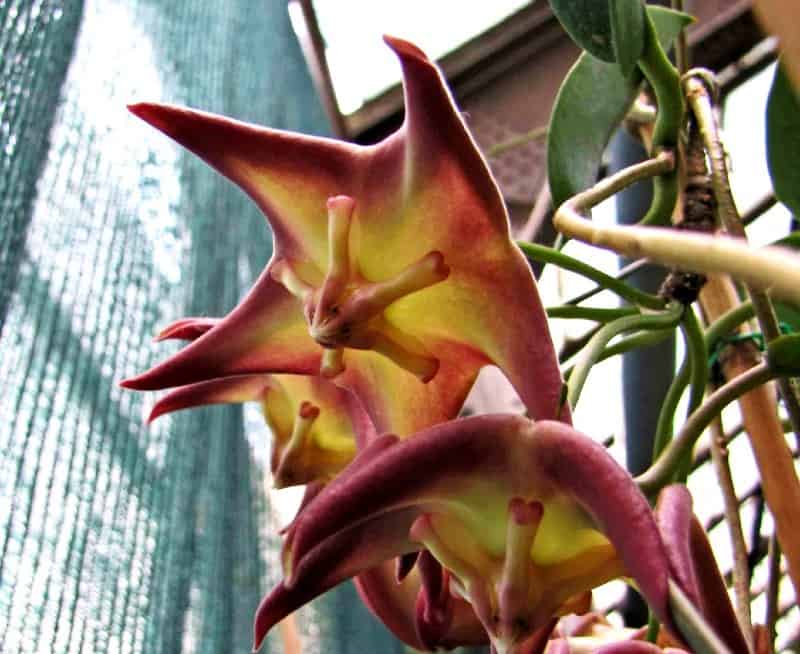
Also, it is not also ideal to place the plant where it could receive insufficient sunlight. Insufficient sunlight stunts the growth of the macgillivrayi. When treated as an indoor plant, you can install a lighting source inside such as artificial growing lights.
However, this is only recommended for gardeners who did not grow macgillivrayi in tropical places.
Temperature & Humidity
The temperature requirement of the Hoya macgillivrayi is the same as that of the tropical temperature. It is known to be a tropical plant. Meaning that it could only best thrive and tolerate conditions where the temperature is 15-30 degrees C or 59-86 degrees F.
These recommended temperatures are enough for the plant to survive and thrive well in the area where it was planted. The below and above temperatures can give complications and stress to the vine. However, the difficulties are only a minor consequence of the Hoya macgillivrayi care.
If the temperature goes too high, consider placing the vine in a temporary place where it could get its warm temperature. Treat your vine as an outdoor plant during the summer and spring seasons. On the other hand, the vine is best placed indoors during the winter and fall seasons.
However, it would help if you were extra watchful every season as a sudden increase or decrease in temperature could give you a hint of when is the right time to place the vine away from its permanent place.
The humidity requirement of the macgillivrayi hoya is very high. The very high humidity is what all tropical plants needed the most. The higher the humidity level, the higher the optimal conditions you are giving to the plant.
High humidity encourages the plant to grow well and to thrive easily, making it easier for propagation for the next year or two. When planted in a place with a medium level of humidity, the plant can still survive and thrive. However, there will be an enormous difference compared to the tropical plants that grow well with a higher humidity level.
Also, the low humidity level is not suitable for the optimal condition needed for the plant to survive and thrive. To ensure a consistent and higher humidity level, you can use any available techniques and equipment present in your home or buy in the nearest garden store.
You may use a humidifier, a container with pebbles filled with water, mist, and other techniques to increase the humidity level required for the plant.
It is important to remember that the bathroom and living room have a consistent, higher humidity level that allows the plant to thrive well and a natural décor for the home.
Fertilizer
The fertilizer requirement of the slow-release fertilizer is slow-release fertilizer. The said fertilizer can help the plant grow faster, complete its required nutrition, and solve its vitamin deficiency. The fertilizer may take time for the plant to absorb its nutrients fully.
I highly prefer organic fertilizers for the macgillivrayi hoya care because the aforementioned fertilizer has no adverse effects on the plant. In addition to that, organic fertilizers encourage the soil mix or potting mix to be healthy and rich in nutrients.
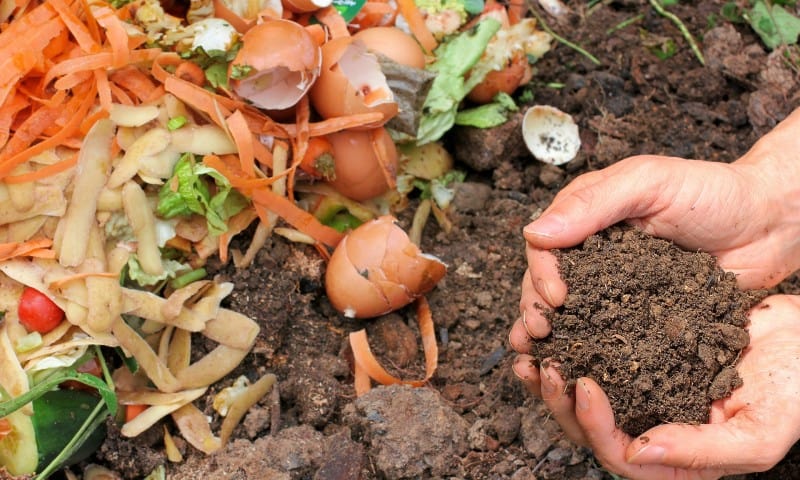 Summer and spring seasons are the preferable seasons where you could give apply fertilizer for the plant. These seasons are also favorable for the plant as the plant survives and thrives easily in these seasons. At the same time, these seasons are the best propagating seasons.
Summer and spring seasons are the preferable seasons where you could give apply fertilizer for the plant. These seasons are also favorable for the plant as the plant survives and thrives easily in these seasons. At the same time, these seasons are the best propagating seasons.
During fall and winter, you must not give or minimally give the plant fertilizer. During these seasons, the vine usually sleeps or on dormant. Excessive fertilizer application to the vine can stick the salt or any chemicals that poison the plant.
How do we propagate our Hoya macgillivrayi
Hoya macgillivrayi is a fast-growing epiphytic climber species and twiner featuring thick, oval, pointed leaves that are light green and alternate on the twining branches. The elder stems are cut in 3 to 4-inches lengths with leaves and nodes attached to propagate Hoya MacGillivrayi.
You can have your cuttings taken at any time of year; however, it is better to avoid taking them during the blooming season.
Here’s the method on how to propagate Hoya macgillivrayi:
- Begin by cleaning and disinfecting all of your gardening instruments. Disease and infection for your future plant will be less likely as a result of this.
- Next, cut off 2 to 3 vines from a non-flowering stem from the macgillivrayi plant.
- Choose one of the vines to work with. Select one that has two or more nodes on the lower end if possible.
- Next, fill a container halfway with your potting soil mix. Cover with plastic wrap.
- In the soil mix, plant the vines.
- This mixture can be supplemented with rooting powder, which promotes growth.
- Fill the plant with water and nutrients.
- The plant requires constant attention over the first 14 days with water and food. Also, please keep it safe from any dangerous illnesses.
- You can be moved your cutting to a larger container after 2 to 3 months.
Growth Zone
The macgillivrayi is a fast-growing plant that can grow up to 25 cm long. This natural climber and the succulent plant are native to Australia. Its thick stems should be given a standing pole so the plant could not climb undesirably on the walls.
In its native home, the plant has been treated as a vine plant or a house plant. When taken care of properly, the flowers can bloom really well.
Know when to repot your hoya
The Hoya macgillivrayi root develops slowly compared to the plant’s green above-ground half. Thus it doesn’t need to be transplanted as frequently. You may repot your Hoya MacGillivrayi every two or three years.
They don’t mind having their roots constrained, and they’ll flower more profusely than those soaring in a big pot.
Pro tip: It’s ideal to use a terracotta pot that’s a few inches bigger than the previous one. When it comes to repotting, terracotta pots are ideal.
Pruning our Hoya macgillivrayi
Pruning Hoya macgillivrayi entails removing sick, wilted, and damaged leaves and branches to keep the plant looking nice and tidy. You can also prune any shoots that are excessively long to keep the plant at the proper size.
Pro tip: Hoyas have twining stems and are natural climbers. If you give a ladder or framework, your Hoya macgillivrayi can reach a height of 3 meters. Bamboo hoops are commonly used to support the vine by many gardeners.
Hoya Macgillivrayi Varieties and Similar Plants
There are approximately 300-450 species of hoya plants. One of which is the Hoya Mac. Here are some examples of hoya species or varieties that have a bit of similarity to the Hoya MacGillivray:
Hoya Carnosa
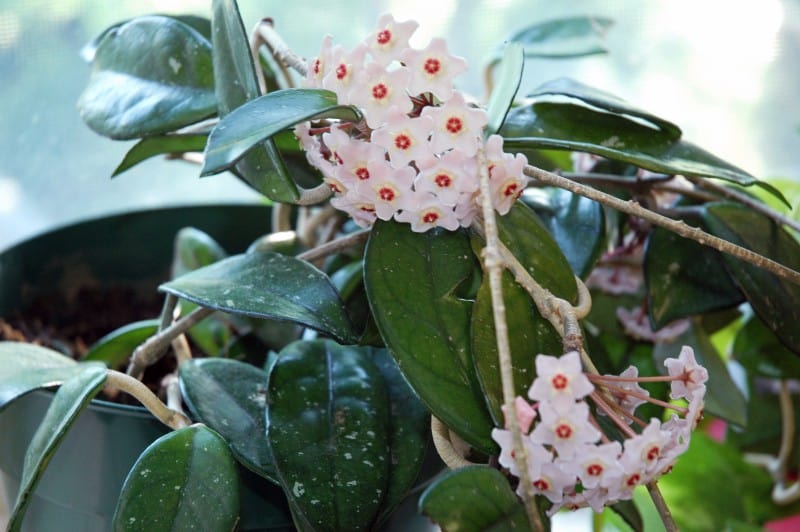
The primary (green) form of Hoya Carnosa is less common than many of its excellent hybrids (of which there is a ridiculous number). The foliage can be plain, variegated, crinkled, or otherwise textured. The blooms are long-lasting, fuzzy clusters of fragrant stars.
Hoya Pubicalyx
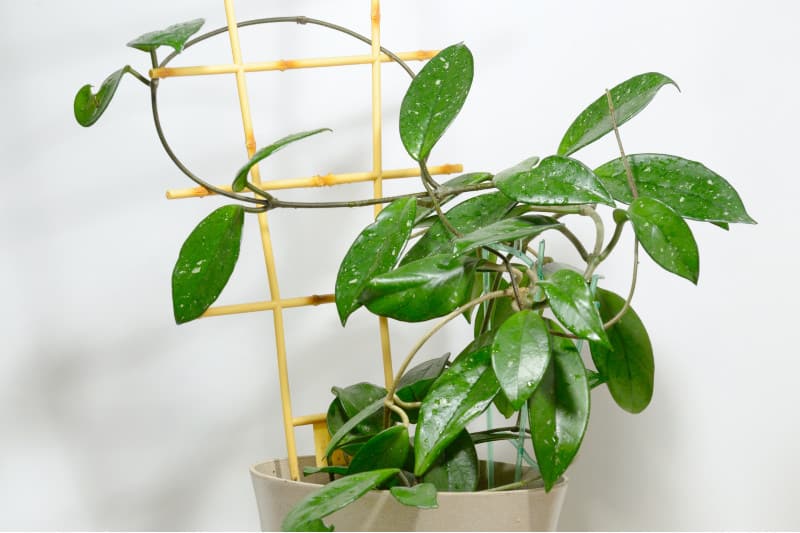
Hoya pubicalyx is a hardy twining vine that can trail or climb, but it’s a little unruly: you may spend time unwinding the plant from its neighbors. It’s one of the fastest-growing Hoyas and very easy to propagate – just put a cutting in water.
Hoya Kerrii
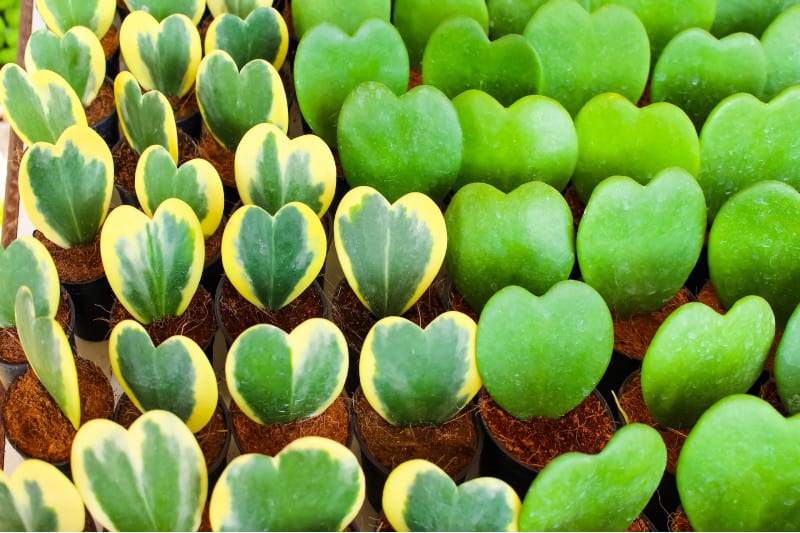
This plant, otherwise known as a Sweetheart Hoya or Lucky Heart, is commonly sold as a single, heart-shaped leaf planted in a small pot. The bright emerald green color of the cute, rounded leaves makes them popular St. Valentine’s Day gifts.
Hoya Macrophylla
This large, rambling species is prized most especially for its waxy, light green, vein-patterned foliage. Their pointed oval leaves have an interesting 3-D texture. Prominent pale veins run longitudinally across a network of horizontally laid smaller veins.
Hoya Macgillivrayi Diseases & Pests
Diseases
Botrytis blight is a fungus that provokes leaves to turn grey. Because moisture levels are highest in the middle leaves, they are more commonly affected. The sickness is more common during the cold, darker months of the year.
Controlling via inspection and maintaining proper hygiene is the best defense. Remove any fading or blighted flowers, foliage, or the entire plants as soon as possible.
Root rot. The signs of this disease in hoyas can go undiscovered for a long time. The roots will eventually become gray to black and can be mushy or dry. Even when the roots die, the waxy coating on the hoya plant can prevent the wilting of the plant’s leaves.
Reduced watering of affected plants is the best way to combat this disease.
Pests
Aphids have flexible bodies. The oleander aphid is the most common aphid seen on wax plants. Essential aphid insecticides can be bought at your local garden center and are relatively easy to control.
Fungus gnats are tiny black insects that live on the top of the soil or leaves. Their larvae reside in the ground and devour the plant’s roots, causing damage. Once the gnats have been identified, soil soaking and insecticide spray on the soil surface successfully control the larvae.
Mites are so microscopic that they can go undetected until they release significant damage to the plants. New leaves cupping downward, puckering, and stunted growth are the first signs. The most crucial aspect of insect management is thorough pesticide coverage.
Frequently Asked Questions
One of the most delicate blooms in the species, the waxy blossoms are rich burgundy and range up to 6 cm across. They have a powerful fragrance that smells like ‘luxury perfume.’ Some flowers contain a mild odor to attract flies and beetles, but most are fragrant, especially in the evening.
It’s enticing to pick a flower stem, especially if it’s in bloom. Most hoyas flower on the same bud nodes year after year; therefore, picking the flower eliminates any chance of flowers on that stem the following year.
When the temperatures rise throughout the summer, they want to be misted up to five times every week. When misting, use lukewarm water. Avoid misting and water less frequently over the winter to save your Hoya MacGillivrayi, but don’t let it dry up totally. It is pretty sensitive to overwatering, which can lead to root rot. In humid weather, it’s essential to keep it somewhat dry.
Many stores sell this kind of plant, but you can also rely on online websites like Plantly. They offer convenience in delivering your plants and ensure that your plant is in good condition. Call us anytime!
Whether you want to buy, sell or simply reach out to other plant enthusiasts, Plantly is the right place to be!
Only 1 left in stock In stock In stock
Free Shipping
$156.04
Sold By:
BONSAI WORLD LLC
Ficus Kaneshiro Bonsai Tree (ficus microcarpa ‘kaneshiro’)
Only 1 available and it’s in 1 people’s basket
Sold By:
BONSAI WORLD LLC
$45.00
Sold By:
Beauties & Beasts
$50.00Ceramic Planters- Rae Dunn by Magenta Stem Print- Set of 2
Rated 4.83 out of 5 based on 24 customer ratings00
Sold By:
Beauties & Beasts
Free Shipping
$18.95
Sold By:
CTS Air Plants
Air Plants Tillandsia Collection of 10 Easy Houseplants
Only 100 available and it’s in 2 people’s basket
Sold By:
CTS Air Plants


